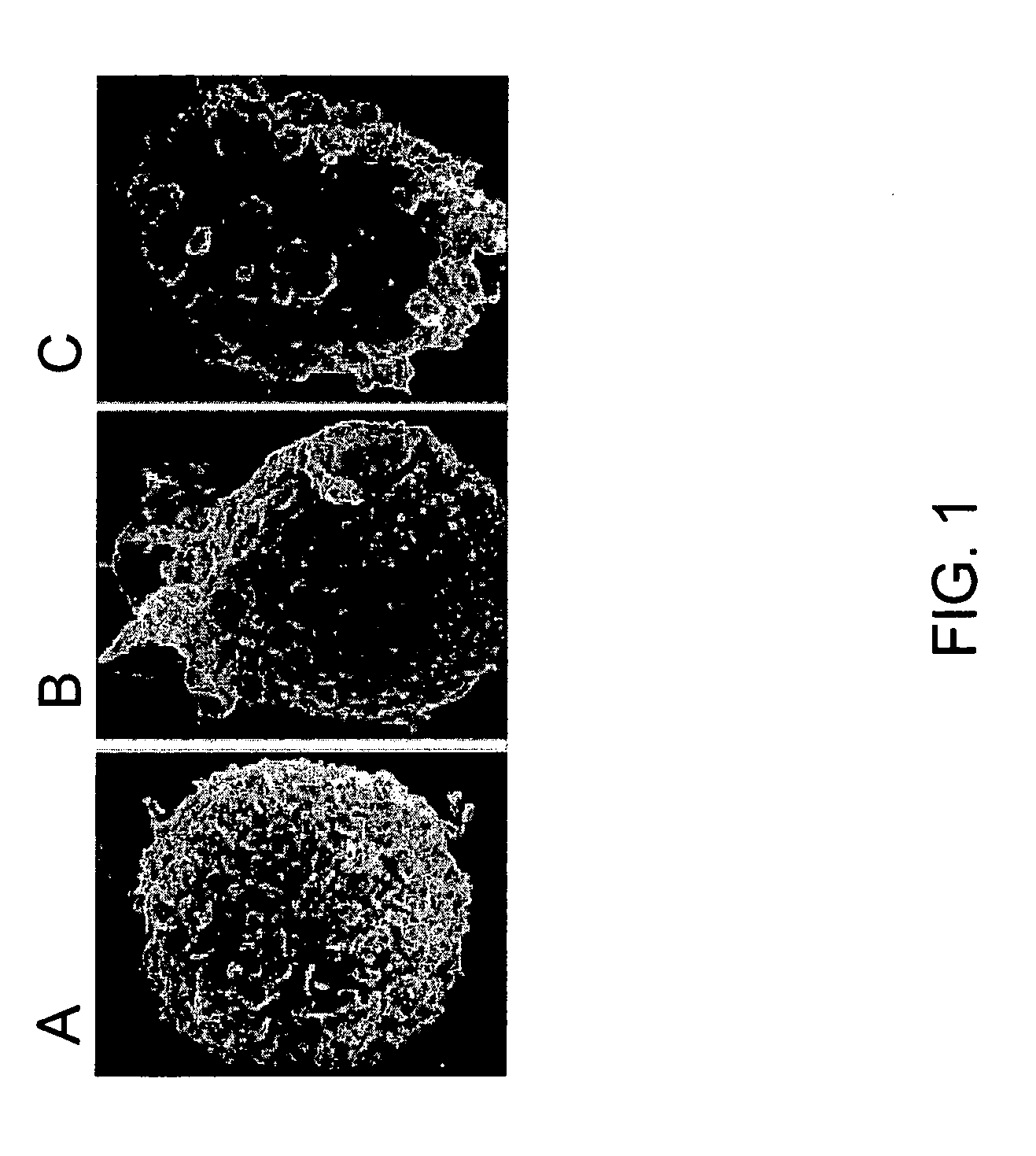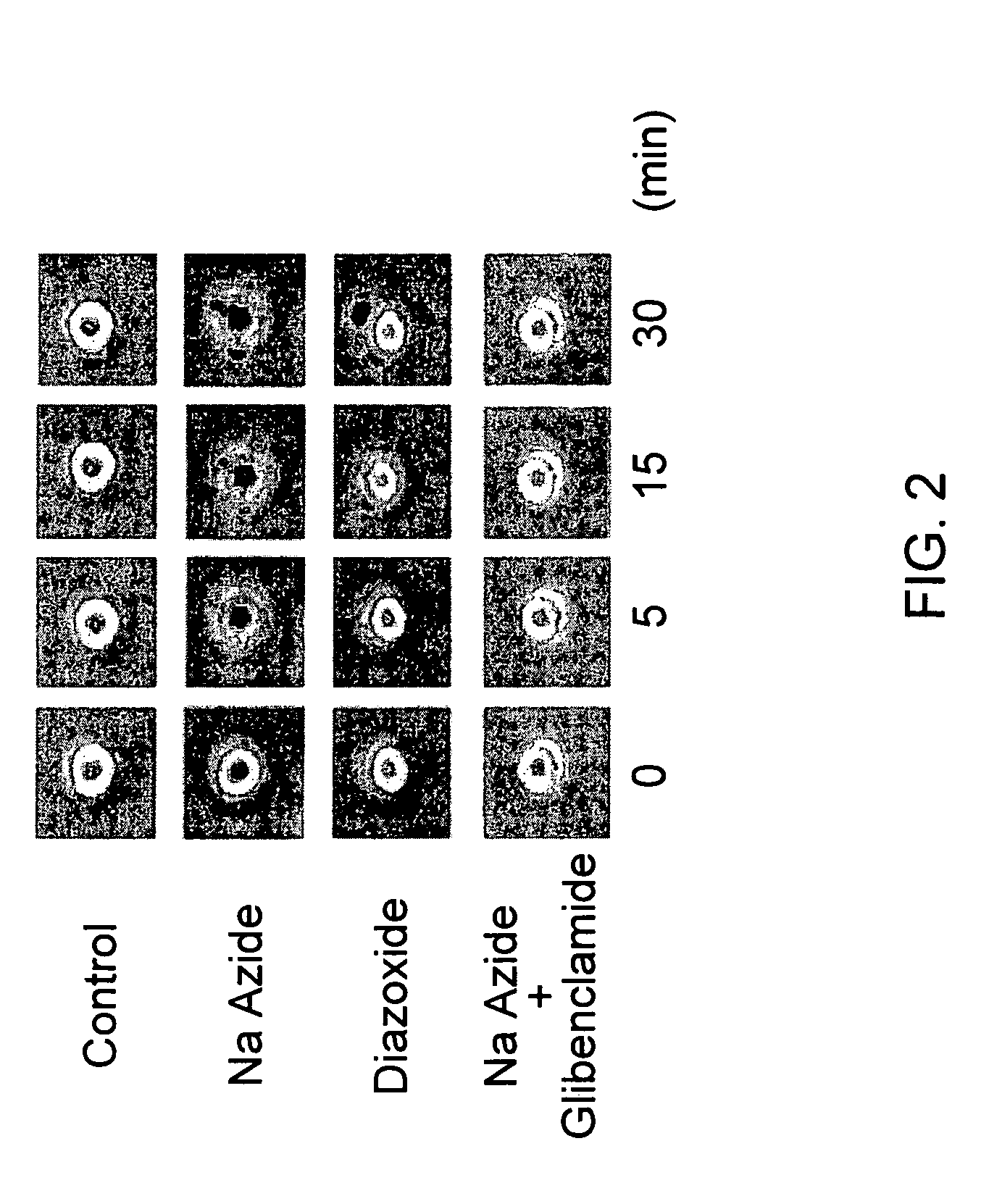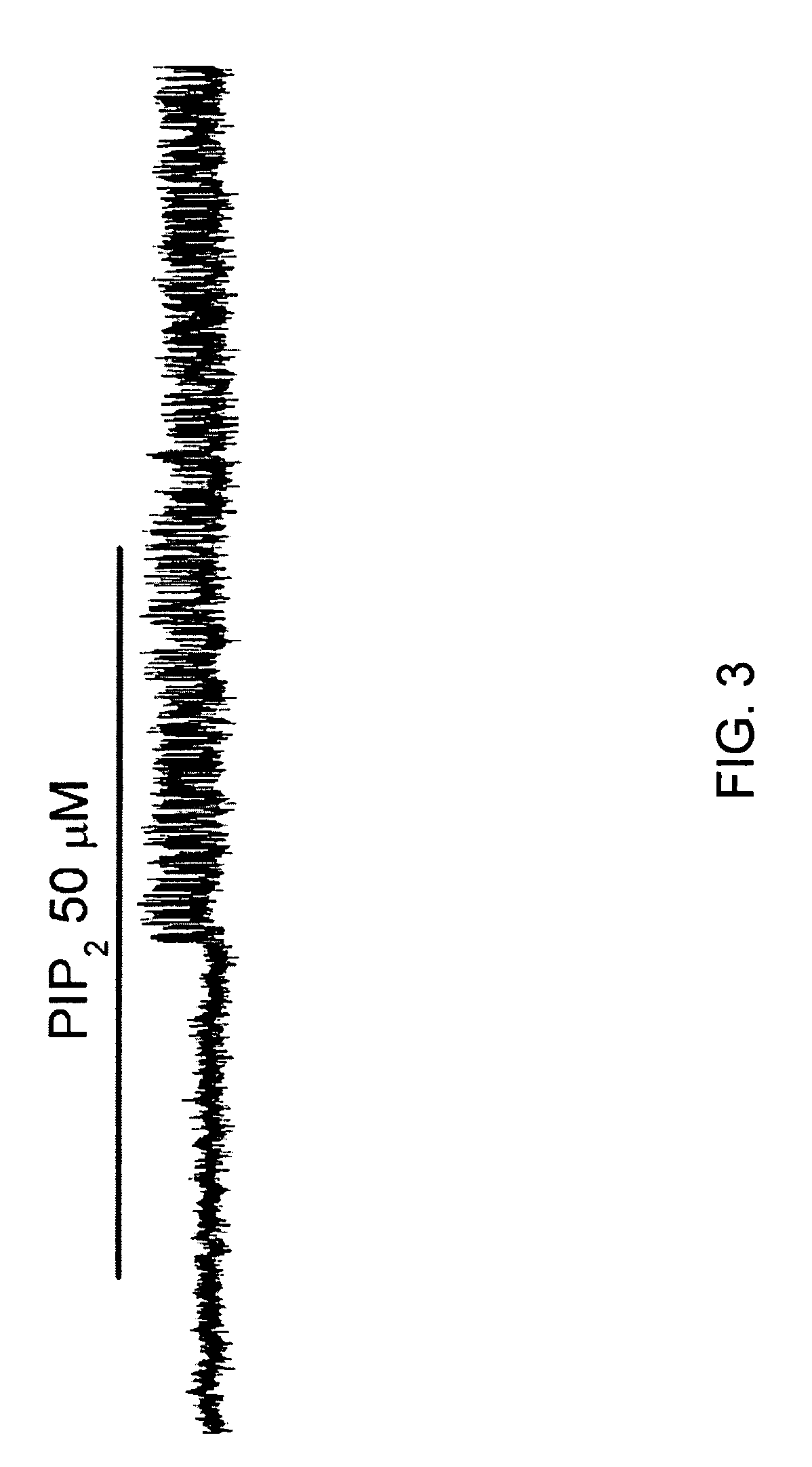Methods for treating spinal cord injury with a compound that inhibits a NCCa-ATP channel
a technology of nccaatp and compound, which is applied in the field of cell biology, physiology and medicine, can solve the problems of ineffective treatment, precarious penumbra, and often worsened concussion injury to the spinal cord, and achieve the effects of reducing cell death, reducing edema, and reducing blood extrusion
- Summary
- Abstract
- Description
- Claims
- Application Information
AI Technical Summary
Benefits of technology
Problems solved by technology
Method used
Image
Examples
example 1
Modulation of NCCa-ATP Channel
[0215]When a cell is depolarized by a massive influx of Na+, H2O is drawn into the cell due to the osmotic gradient. Influx of H2O causes cell blebbing, i.e., cytoxic edema. R1 astrocytes were examined for this phenomenon using scanning electron microscopy (SEM) and phase contrast microscopy. Freshly isolated cells examined with SEM showed a complex surface decorated with multiple fine processes (FIG. 1A). Shortly after exposure to Na azide, but well after depolarization is expected, the complex cell surface began to be replaced by surface blebs accompanied by smoothing out of the membrane (FIG. 1B). Later, the surface appearance was dominated by blebs, with complete loss of the delicate processes observed in controls (FIG. 1C).
[0216]Blebbing is reproduced in the absence of ATP depletion by simply opening the NCCa-ATP channel with diazoxide (FIG. 2). Conversely, blebbing typically observed with Na azide-induced ATP depletion is completely prevented by g...
example 2
Modulation by Estrogen
[0217]A characteristic feature of KATP channels (Kir6.1, Kir6.2) is that channel affinity for ATP is modulated by the presence of the membrane lipid, phosphatidylinositol 4,5-bisphosphate (PIP2). The open-state stability of KATP channels is increased by application of PIP2 to the cytoplasmic side of the membrane (Ashcroft, 1998; Baukrowitz et al., 1998; Rohacs et al., 1999). An increase in the open-state stability is manifested as an increase in the channel open probability in the absence of ATP, and in a corresponding decrease in sensitivity to inhibition by ATP (Enkvetchakul et al., 2000; Haruna et al., 2000; Koster et al., 1999; and Larsson et al., 2000).
[0218]Given the numerous similarities between the KATP channel and the NCCa-ATP channel, the inventors postulated that ATP-sensitivity of the NCCa-ATP channel would respond to PIP2 in the same way. This was tested by studying NCCa-ATP channels in inside out patches with Cs+ as the charge carrier, and with 1 ...
example 3
NCCa-ATP Channel and Necrotic Death
[0224]Applicants discovered a new mechanism of necrotic death of reactive astrocytes in brain injury and stroke that implicate an important role in spinal cord injury. Blebbing and cytotoxic edema presage necrotic cell death. Freshly isolated reactive astrocytes were labeled with propidium iodide, a marker of necrotic death, and for annexin V, a marker of apoptotic death. Cells exposed to Na azide showed a marked increase in necrotic but not apoptotic death (FIG. 7). However, when glibenclamide was present, Na azide-induced necrotic cell death was significantly reduced (FIG. 7). These in vitro data show the important role of the NCCa-ATP channel in necrotic death of reactive astrocytes, and indicate antagonists of SUR1, such as glibenclamide, are useful in preventing cytotoxic edema and necrotic death in vivo.
[0225]The Applicants studied NCCa-ATP channels in a rodent model of stroke. In the penumbra, SUR1 labeling was found in stellate-shaped cells...
PUM
| Property | Measurement | Unit |
|---|---|---|
| single-channel conductance | aaaaa | aaaaa |
| single-channel conductance | aaaaa | aaaaa |
| affinity | aaaaa | aaaaa |
Abstract
Description
Claims
Application Information
 Login to View More
Login to View More - R&D
- Intellectual Property
- Life Sciences
- Materials
- Tech Scout
- Unparalleled Data Quality
- Higher Quality Content
- 60% Fewer Hallucinations
Browse by: Latest US Patents, China's latest patents, Technical Efficacy Thesaurus, Application Domain, Technology Topic, Popular Technical Reports.
© 2025 PatSnap. All rights reserved.Legal|Privacy policy|Modern Slavery Act Transparency Statement|Sitemap|About US| Contact US: help@patsnap.com



